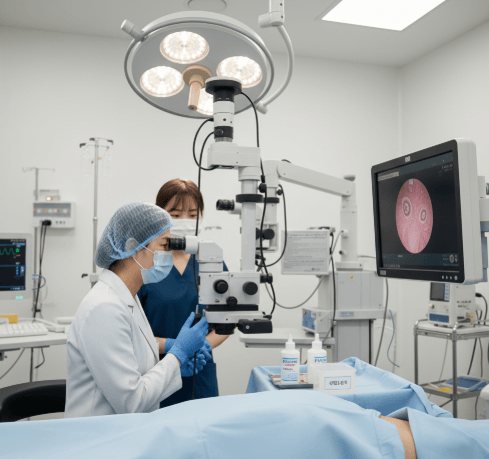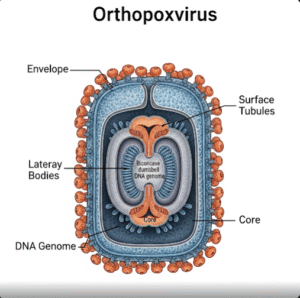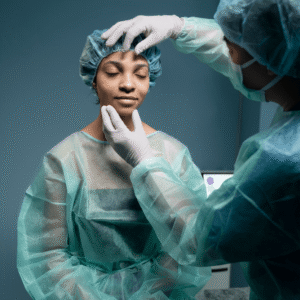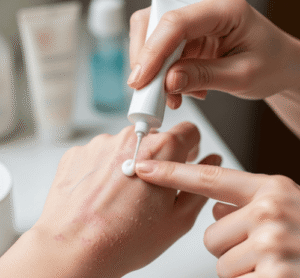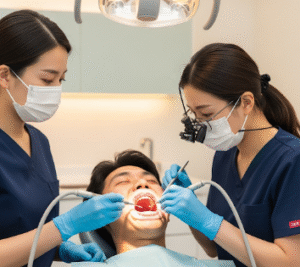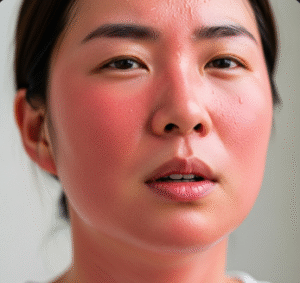What it is
- ➤ Colposcopy is a diagnostic procedure used to closely examine the cervix, vagina, and vulva for signs of disease, usually after an abnormal Pap smear or HPV test.
- ✦ A special magnifying instrument called a colposcope (similar to a microscope with a light) is used to illuminate and enlarge the cervical area, allowing doctors to see abnormal cell patterns.
- ➟ If areas look suspicious, the doctor may take a biopsy for further analysis.
- Important: A colposcopy itself is not a treatment, but a diagnostic step to confirm whether abnormal screening results indicate precancer or cancer.
Why it’s done
- ➤ Main purpose: Identify abnormal or precancerous cervical tissue following a suspicious screening result.
- ✦ Indications include:
- ▪ Abnormal Pap smear (ASC-US, LSIL, HSIL, etc.).
- ▪ Positive high-risk HPV test.
- ▪ Unexplained bleeding, especially post-coital bleeding.
- ▪ Abnormal appearance of the cervix on routine exam.
- ➟ Benefits:
- ✅ Provides direct visualization of cervical lesions.
- ✅ Allows for targeted biopsy, improving accuracy.
- ✅ Essential for guiding treatment decisions.
- ⟶ Limitations:
- ▪ May not detect very small or hidden lesions.
- ▪ Requires patient cooperation; mild discomfort possible.
- Bold takeaway: Colposcopy bridges the gap between screening and treatment—it provides the confirmation needed to plan care.
Alternatives
- ➤ Repeat Pap smear or HPV test: Sometimes recommended for minor abnormalities.
- ✦ Endocervical curettage (ECC): Collects cells from the cervical canal, often performed during colposcopy.
- ➟ Watchful waiting: In selected young patients with mild changes, doctors may delay invasive testing.
- Important: Colposcopy is the gold standard for investigating abnormal screening results—alternatives are limited.
Preparation
- ➤ Schedule: Best done when not menstruating (mid-cycle is ideal).
- ✦ Avoid for 24–48 hours before test:
- ▪ Sexual intercourse
- ▪ Vaginal creams or medicines
- ▪ Tampons
- ▪ Douching
- ➟ Tell your doctor if you:
- ▪ Are pregnant (colposcopy is safe, but biopsy may be limited).
- ▪ Take blood thinners.
- ▪ Have bleeding disorders or immune conditions.
- → Bring: Prior test results (Pap/HPV), medication list, ID/insurance.
- Important: Some women feel anxious—light meal, hydration, and relaxation techniques can help.
How it’s done
- ➤ Step 1 – Positioning: You lie on the exam table with feet supported.
- ➟ Step 2 – Speculum insertion: Opens the vagina so the cervix is visible.
- ✦ Step 3 – Application of solutions:
- ▪ Acetic acid (vinegar-like solution) → turns abnormal cells white.
- ▪ Lugol’s iodine solution (sometimes) → stains normal cells brown, leaving abnormal areas unstained.
- ➤ Step 4 – Examination: The colposcope magnifies the cervix, and the doctor carefully inspects for abnormal patterns.
- ✦ Step 5 – Biopsy (if needed): A small tissue sample is taken. This may cause brief pinching pain and spotting.
- → Duration: 10–20 minutes total.
- Important: Colposcopy does not cut or burn tissue unless a biopsy is done.
Recovery
- ➤ After procedure without biopsy: Resume normal activities immediately.
- ✦ After biopsy:
- ▪ Mild cramping or spotting for a few days.
- ▪ Vaginal discharge (from solutions used).
- ▪ Avoid tampons, intercourse, and douching for 5–7 days or as advised.
- ➟ Results:
- ▪ Normal → return to routine screening.
- ▪ Abnormal → further treatment (cryotherapy, LEEP, laser, or surgery).
- ⟶ Call your doctor if:
- ➤ Heavy bleeding (soaking pads).
- ➤ Severe abdominal pain.
- ➤ Fever or foul-smelling discharge.
- Important: Follow-up is critical—ignoring abnormal biopsy results can allow precancer to progress.
Treatment option in Korea
- ➤ Where available:
- ▪ University hospitals and women’s health centers in Seoul, Busan, Incheon, Daegu, and other cities.
- ▪ International clinics that cater to medical tourists with multilingual support.
- ✦ Why Korea:
- ▪ State-of-the-art colposcopes and digital imaging systems.
- ▪ Experienced gynecologic oncologists for precision diagnosis.
- ▪ Fast lab turnaround (results in days, not weeks).
- ➟ If abnormal findings:
- ▪ Cryotherapy or laser ablation for low-grade lesions.
- ▪ LEEP or cone biopsy for high-grade lesions.
- ▪ Multidisciplinary oncology care if cancer is confirmed.
- ⟶ International patient process:
- ▪ Submit prior results electronically before travel.
- ▪ Expect same-day colposcopy with optional biopsy.
- ▪ Receive reports in English or other languages.
- Important: Korea’s bundled packages often combine Pap smear, HPV testing, colposcopy, and counseling—ideal for comprehensive women’s health checkups.

